
"Makogarei", or marbled sole, grows in the water that springs up in the sea in Beppu Bay, which can be seen from the site of Hiji Castle ruins. This fish doesn't smell like mud because it lives on the sea floor, where fresh water springs. It has a plump body, and its head is relatively small. With characteristics that differ from those in other places, this marbled sole from Beppu Bay is known around Japan as "Shiroshita-karei".
The delicious taste of this marbled sole has been known for a long time. In the Edo period, it was the fish that could not be eaten by ordinary people, only the feudal lord. At the time of the official daimyo attendance service, it was presented as dried fish to the shogun's family. It is said that once every four years, he carried live marbled sole to Edo in time for the Boy's Day festival.
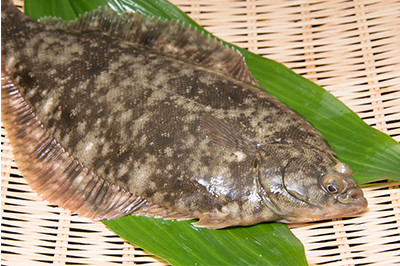
Gastronomist Kanjiro Kinoshita wrote this rave review in a periodical called "Zoku Bimi Kyushin" in 1937. "The characteristic of this fish is that it is soft in meat and pure white in color, and there is no fishy smell. If it is made into sashimi, it is shiny and, like blue quartz, it should be considered as the best among fish and shellfish in terms of flavor."
There are a variety of methods for cooking marbled sole. Its delicacy stands out in all Japanese cooking methods. Dishes such as sashimi, nigiri-zushi, boiling, tempura and deep-fried kara-age attract diners.
The season for marbled sole is from April to September. It is said to be the most delicious around May to July. In the beginning of the season, many customers are excited for the chance to taste this incomparable fish. From authentic Kaiseki cuisine to an affordable lunch set, you can enjoy it according to your budget.
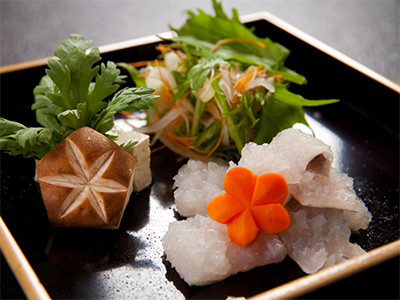
Hijimachi is one of the top producers of eels in the prefecture. Hiji eel is cultivated using a special process called "Ikashikomi" . The eels are put in a low-water-temperature fish preserve for several days to clean the digestive organs and tighten the fish up. By getting rid of impurities, it is considered quite delicious.
Since eels have many small bones and require an advanced cooking technique called "Hagiri", there are not many restaurants in the prefecture serving eel dishes. However, there are many places in Hiji-machi where visitors can eat sea eel.
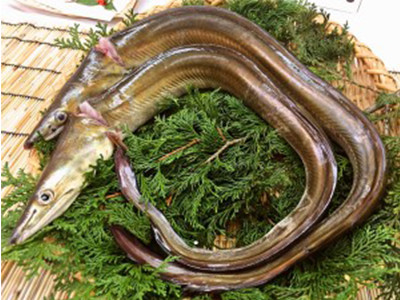
Speaking of eel, boiling is the classic style of cooking. However it can be enjoyed in a variety of ways, such as frying and roasting. In general, restaurants within Hiji-machi offer eel dishes between June and November.
Why don't you take the opportunity to taste the fresh and delicious dishes unique to this region? At the Fukae morning market, sliced eel with the bones cut up can be purchased, so please try it out, too.
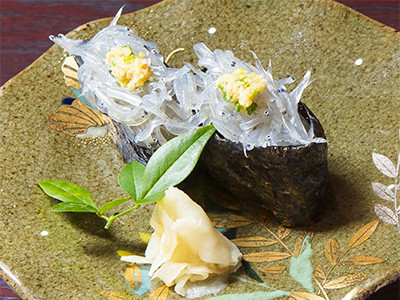
Whitebait is one of the natural bounties of Beppu Bay. In Hiji-machi, fishing has been popular since ancient times. After being dried in the sun, the young sardines are shipped throughout the country as a luxury brand called "Bungo Beppu Wan Chirimen".
Since it is easily damaged, whitebait is boiled in a pot as soon as it is caught, so there are processing plants lining the coast of Beppu Bay. In the season of dried young sardines, these fish are laid out to dry on one side by the harbor. This white carpet-like landscape is a sign of summer.
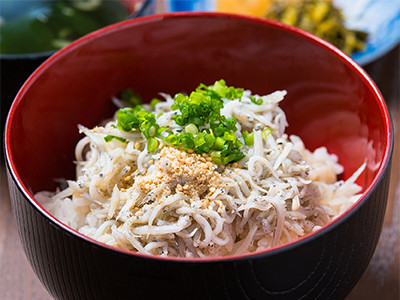
Before it has been sun-dried, the boiled whitebait is called "Kama-age Shirasu". Unlike dried young sardines, visitors can enjoy a plumper texture. The recommended way of eating "Kama-age Shirasu" is called "Shirasu-don". In Hiji-machi, there are restaurants that serve this "Shirasu-don", as well as shops selling fresh "Kama-age Shirasu" directly delivered by fishermen.
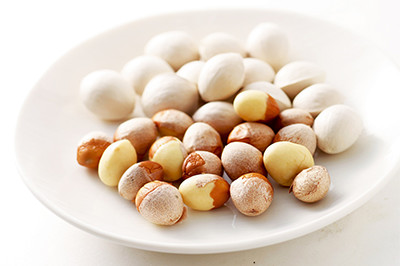
Oita Prefecture boasts the second-largest ginkgo nut production in the nation, and Hiji-machi is the largest producer of ginkgo nuts in the prefecture.
The Hiji-machi ginkgo nut is characterized by its large grain and rich flavor.
In addition to the typical dishes of ginkgo nut rice and "chawan" steamed rice, the shell is also peeled for salt-boiling and salt-frying.
The shipping season is from the end of August to December.
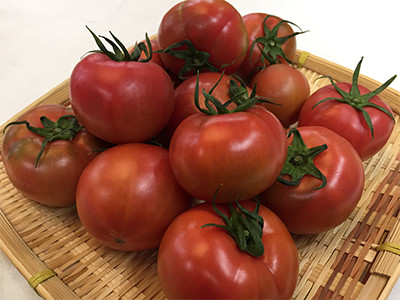
Produced in the Manaii area, this tomato gets its name from the seawater that is used to cultivate it.
With a sugar content as high as 8 degrees or more, it tastes like a fruit.
It is also known by the "King Toma" brand.
The shipping season is from January to July.
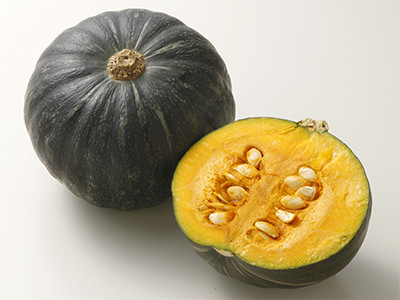
Hiji-machi boasts the largest pumpkin production in the prefecture.
Characterized by its thick flesh and flaky texture, it is easy to eat.
The shipping season for summer pumpkin is from May to early August, and the winter solstice pumpkin is shipped in December.
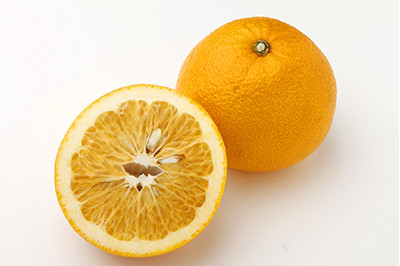
A major feature of Hiji's Beni Hassaku is that this citrus fruit is softer and redder than the usual varieties.
Processed goods made from this fruit, such as marmalade, are also being produced.
The shipping season is from March to April.

Chicken farming is a prosperous business in Hiji-machi.
Hiji chicken eggs are dense and have a very deep flavor.
At the production site, not only can you buy freshly laid eggs, but you can also enjoy sweets made from them. There are cream puffs, roll cakes and side dishes too.
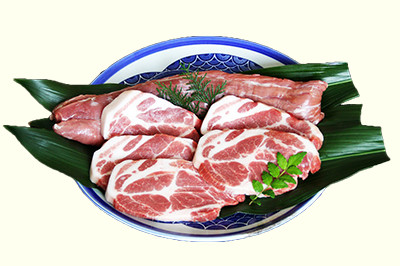
The Hiji brand of pork has become very popular in recent years.
It is farmed in a meticulous environment without causing stress to the pigs.
That is why the fresh pork meat produced in Hiji is very delicate, with a concentrated "umami" flavor.
It's suitable for dishes such as "pork cutlet" and "shabu shabu" hot pot.
